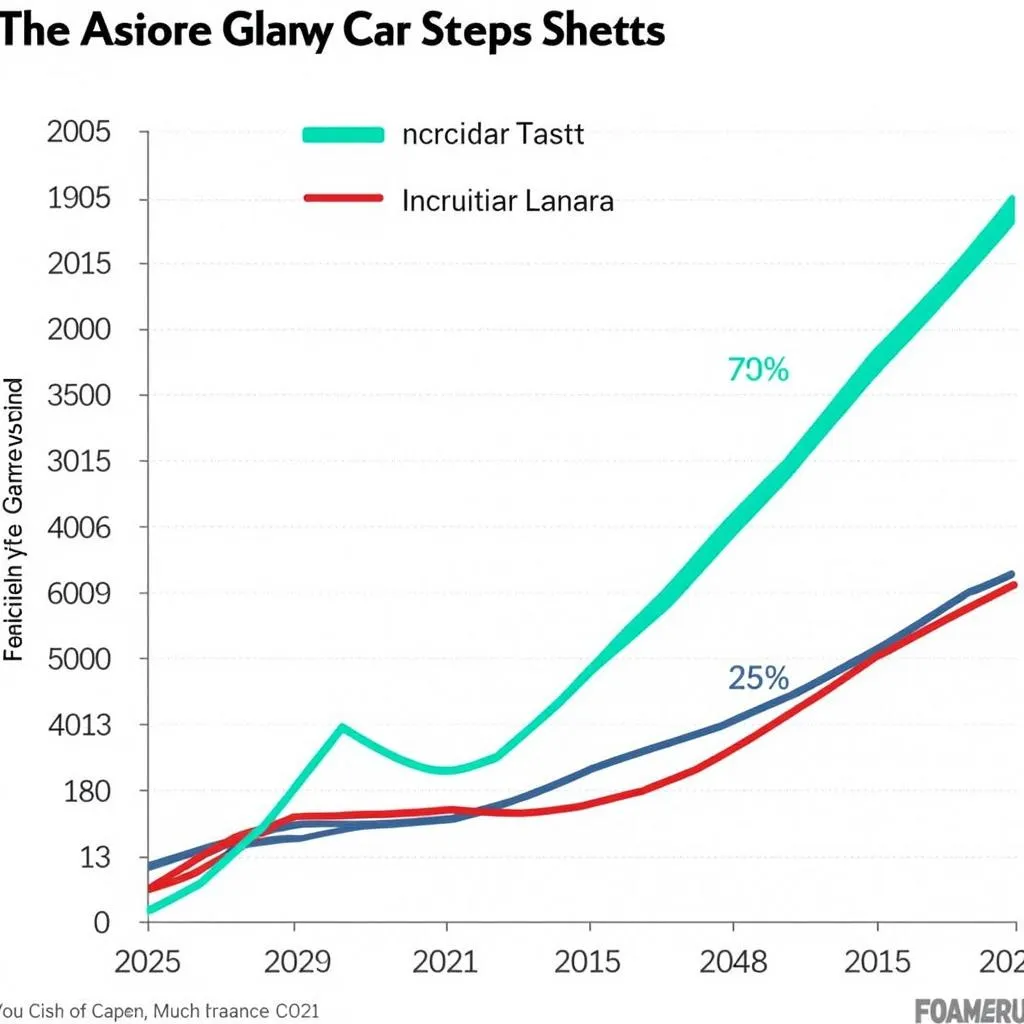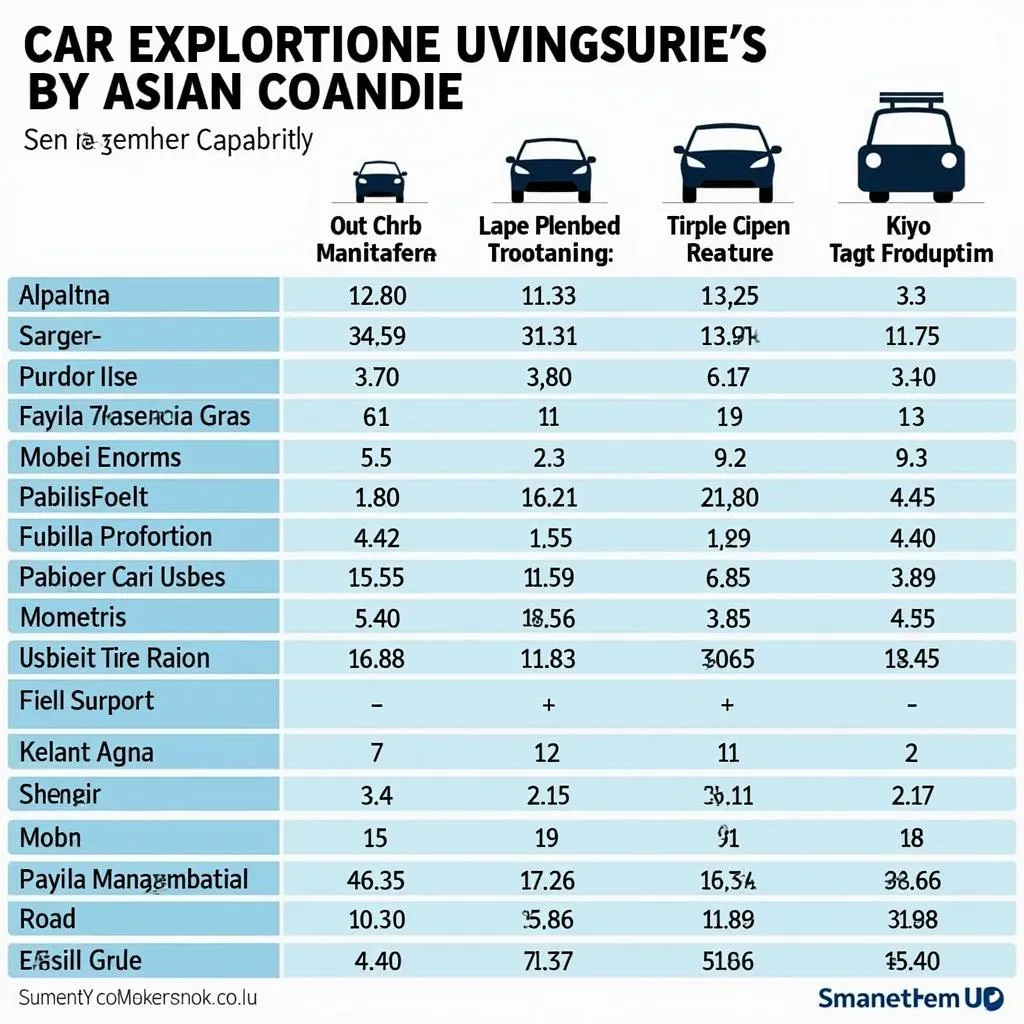The ASEAN Automotive Federation (AAF) data reveals a dynamic and rapidly evolving automotive landscape in Southeast Asia. This data provides valuable insights for industry stakeholders, policymakers, and enthusiasts alike, offering a glimpse into the region’s car market trends, consumer preferences, and economic indicators.
Deciphering the AAF Data Landscape
The AAF, a regional grouping of automotive industry associations in Southeast Asia, collects and publishes data on vehicle production, sales, and exports across its member countries. This data is instrumental in understanding the health of the automotive sector and its impact on the wider economy.
 ASEAN car sales statistics graph
ASEAN car sales statistics graph
Key Insights from Recent AAF Data
Recent AAF data reveals interesting trends shaping the ASEAN automotive industry. Here’s a closer look:
- Rising Sales in Emerging Markets: While established markets like Thailand and Indonesia continue to dominate, emerging economies such as Vietnam and the Philippines are witnessing a surge in vehicle sales, indicating a growing middle class and increased purchasing power.
- Shifting Consumer Preferences: A growing preference for fuel-efficient vehicles and a burgeoning interest in electric vehicles (EVs) are noticeable trends. This shift is driven by environmental concerns and government incentives promoting eco-friendly vehicles.
- Increased Investment in Manufacturing: Several ASEAN countries are attracting significant foreign direct investment in automobile manufacturing, establishing themselves as regional production hubs for global automakers.
 ASEAN car production comparison chart
ASEAN car production comparison chart
The Impact of AAF Data on Policy and Business
The data disseminated by the AAF plays a crucial role in shaping government policies and influencing business strategies within the automotive sector.
- Policy Formulation: Governments rely on AAF data to formulate regulations related to vehicle emissions, fuel economy standards, and safety protocols. The data also guides the development of policies promoting investment and growth in the automotive industry.
- Business Strategy: For automakers, the AAF data serves as a compass, guiding their production plans, marketing strategies, and model lineups based on regional demand and consumer preferences.
Challenges and Opportunities in the ASEAN Automotive Landscape
The ASEAN automotive industry, while brimming with potential, also faces challenges that require collaborative solutions:
- Infrastructure Development: Investing in robust transportation infrastructure is vital to support the growing number of vehicles on the road and enhance logistics within the region.
- Harmonization of Regulations: Streamlining automotive regulations across ASEAN member states will facilitate easier trade and promote a more integrated regional market.
- Developing a Skilled Workforce: Building a skilled workforce through targeted education and training programs is essential to meet the demands of the evolving automotive industry, particularly in areas like EV technology and automation.
Conclusion
The Asean Automotive Federation Data provides invaluable insights into the dynamic automotive landscape of Southeast Asia. This data, coupled with a collaborative approach to addressing challenges and leveraging opportunities, will be instrumental in shaping the future of mobility in the region. The AAF data is a valuable resource for anyone seeking to understand this evolving market.
FAQ
What is the role of the ASEAN Automotive Federation?
The ASEAN Automotive Federation (AAF) is a regional association of automotive industry organizations from ASEAN countries. It aims to promote the development of the automotive industry in the region, facilitate trade, and represent the interests of its members.
How frequently does the AAF release data?
The AAF typically releases data on a monthly or quarterly basis, depending on the specific data set. You can find the latest data releases on the official AAF website or through industry publications.
What are some of the key challenges facing the ASEAN automotive industry?
Some of the significant challenges include infrastructure development, harmonization of regulations across member states, and the need for a skilled workforce to support the industry’s growth, particularly in new technologies.
How does the AAF data contribute to policymaking?
The data collected and published by the AAF is instrumental in assisting policymakers in making informed decisions related to the automotive industry. This includes areas like vehicle emissions standards, fuel economy regulations, and safety protocols.
What is the outlook for the ASEAN automotive industry?
The ASEAN automotive industry is expected to experience significant growth in the coming years, driven by a rising middle class, increasing purchasing power, and a shift towards personal mobility. However, addressing challenges related to infrastructure, regulations, and talent development will be crucial to ensuring sustainable growth.
Need More Information?
For further assistance and inquiries regarding the ASEAN automotive industry and relevant data, please contact us at:
Phone: 0369020373
Email: [email protected]
Address: Thôn Ngọc Liễn, Hiệp Hòa, Bắc Giang, Việt Nam
Our dedicated customer service team is available 24/7 to provide support and guidance.
